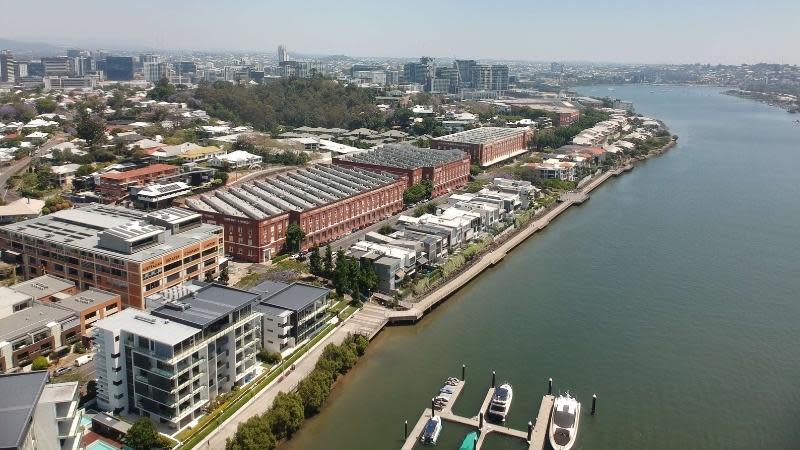Brisbane Expansion to Tackle Housing Shortfall

“We’ll look at expanding the residential footprint of Brisbane.” No sooner had those words passed Brisbane Lord Mayor Adrian Schrinner’s lips than you could almost hear the collective click of developers’ ears pricking up.
As part of initiatives in the Brisbane City Council’s 2022-23 budget aimed at combating the housing crisis, so-called “suburban renewal precincts” will be identified for residential and mixed-use development.
Schrinner said the focus would be on activating urban renewal in former commercial or light industry areas—potentially transforming them into the next South Brisbane, Woolloongabba, Teneriffe or Newstead.
“The suburban renewal precincts initiative is aimed at meeting the demand for new homes sooner and without major changes to existing low density residential areas.
“It’s about identifying new areas that can be unlocked to create vibrant and new residential and mixed-use communities,” he told a fiery council budget meeting.
“As part of this initiative we’ll look at expanding the residential footprint of Brisbane into areas that may have previously had a commercial or light industry use.
“This approach has previously been used in inner-city industrial areas such as South Brisbane, Woolloongabba, Newstead and Teneriffe, and it has transformed those areas into some of the most sought-after places to live in Brisbane.
“Now we’re going to take this proven model to other parts of Brisbane.”
Handing down the council’s $4-billion budget, Schrinner said as a city Brisbane had become a victim of its own success.
“Our city’s fantastic lifestyle and diverse economy have placed us at the top of tree when it comes to domestic population growth,” he said.
But he said the issue of housing affordability was “almost a perfect storm, right now”.
“The issue of housing affordability is being talked about at weekend barbecues right across Australia,” Schrinner said.
“The recent rise in official interest rates has slowed the extraordinary price growth in other capital cities but in Brisbane the market continues to rise and increase.”
Pointing the finger at some of his fellow councillors, Schrinner added: “Here in Brisbane we have the perverse situation where Labor, Green and independent councillors continue to actively oppose the construction of new homes in their area ... this type of approach is not helping affordability”.
The comment raised the ire of opposition councillor Steve Griffiths and independent councillor Nicole Johnston, who shouted down the Lord Mayor, repeatedly calling him “a liar” as the council chamber erupted.
“No I'm not taking my seat, the Lord Mayor should withdraw this statement,” Griffiths protested after being ordered to sit down.
“It’s misleading and not true and not appropriate for a council budget document. We do not oppose development in our areas. We oppose bad development.”

The suburban renewal precincts plan is one of two budget initiatives, which seek to use council “levers” to help overcome the housing crisis that is making it increasingly difficult to both afford to buy and find a home to rent.
As well, property owners who rent their homes for short-term accommodation will be slugged 50 per cent higher rates.
The introduction of a new “transitory accommodation” rating category is aimed at increasing the stockpile of longer-term rental housing in Brisbane, where vacancy is less than 1 per cent.
“The short-term rental trend, which is facilitated by well-known booking apps, removes homes from the long-term rental market and this contributes to supply shortages and increasing housing costs,” Schrinner said.
“It creates an uneven playing field and jeopardises investment in purpose-built short-term accommodation like hotels, and this is not a good scenario for a city that is a decade away from hosting the world’s biggest sporting event.”
Other major announcements in the council budget included a 4.93 per cent rates hike—the biggest increase in more than a decade as the city recovers from the impact and losses incurred due to Covid and recent floods.
The council’s net debt has hit $3 billion, up from $2.8 billion last year, after it copped a $220-million revenue loss from the two years of the pandemic and now has to fork out $330 million to cover the city's flood recovery bill.
A total of $1.35 billion from the council’s coffers has been allocated for infrastructure investment in 2022-23 and a further $500 million for its “rebuild and recover” program.
About $244 million will be pumped into creating better parks, playgrounds and green spaces.
The council is also coughing up to help deliver an international-standard cycling track in the lead-up to the 2032 Olympics, joining the state and federal governments in developing the $35-million Murarrie Recreation Reserve International Cycle Park as a key training venue.















